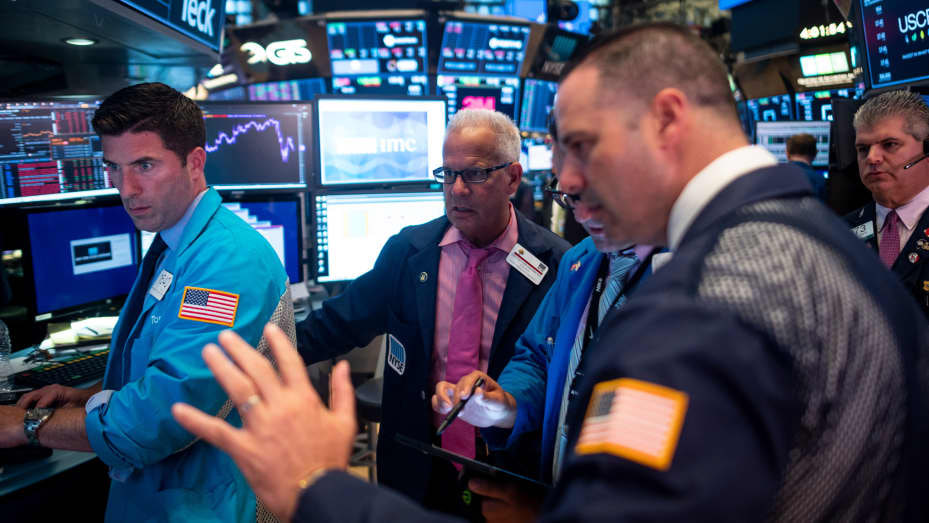Commodity Market Weekly Recap: Oil Rebounds, Gold Prices Surge, and a Glimpse of a Potential RMB Rise
Meta Description: Explore the commodity market's weekly performance, including oil's rebound, gold's price surge, and the potential for a RMB rise. Learn about key factors driving price movements, including economic data, geopolitical tensions, and the impact on global markets.
The commodity market, after experiencing a subdued period in the past two weeks, saw a resurgence this week (August 26th - August 30th). Crude oil prices staged a modest rebound, while prices in the black market surged. Lithium carbonate saw a significant price jump.
This week's market activity was marked by several noteworthy developments, highlighting the intricate interplay of global economic trends, geopolitical events, and investor sentiment. Let's delve into the key themes that dominated the market landscape.
Oil Prices Rebound: A Complex Mix of Factors
The week witnessed a positive shift in the energy landscape, with oil prices experiencing a rebound driven by a confluence of factors.
Supply Tightness and Geopolitical Tensions: The market was buoyed by news of production cuts in key oil-producing countries. Iraq announced plans to reduce its oil production to 3.85-3.90 million barrels per day in September, a significant decrease from its July output of 4.25 million barrels. Libya's production has also been significantly impacted, with over half of its output, approximately 700,000 barrels per day, currently halted. These supply disruptions have contributed to concerns about tight oil supply and have underpinned the recent price gains.
Weakening US Economic Data: However, the rebound in oil prices was tempered by a backdrop of weakening economic data in the United States. The US economy added only 11.4 thousand jobs in July, falling short of expectations and signaling a slowdown in the labor market. The US Federal Reserve's (Fed) anticipated interest rate cuts, fueled by the softening economic outlook, have put pressure on oil prices, as a weaker economy tends to curb demand for energy.
The Fed's Balancing Act: The Fed's policy decisions will have a profound impact on the direction of oil prices. While the Fed has hinted at a potential rate cut in September, not all officials are on board. The uncertainty surrounding the Fed's stance has created volatility in the market, making it difficult to predict the future trajectory of oil prices.
Market Outlook: The future of oil prices remains uncertain, with a mix of bullish and bearish factors at play. While supply concerns, particularly those stemming from Libya and potential OPEC+ production adjustments, present upside potential, the weakening US economy and the Fed's policy decisions pose significant downside risks. The market is likely to remain volatile in the coming weeks as investors grapple with these competing forces.
Gold Prices Soar: A Safe Haven in Uncertain Times
Gold continues to shine as a safe haven asset, with prices reaching new highs in recent weeks. The surge in gold prices is driven by a combination of factors, including:
Recession Fears: The global economic outlook remains fragile, with many investors concerned about the possibility of a recession. Gold is often seen as a safe haven during times of economic uncertainty, as it tends to hold its value even when other assets are declining.
Geopolitical Instability: The ongoing geopolitical tensions in the Middle East and other parts of the world are also contributing to gold's appeal. Gold is often seen as a hedge against political instability, as it is a relatively stable investment that is not tied to any particular country or economy.
Falling Interest Rates: The Fed's potential interest rate cuts are also supporting gold prices. As interest rates fall, the opportunity cost of holding gold decreases, making it more attractive to investors.
Strong Demand: Global demand for gold remains strong, driven by both central bank purchases and investor demand. Central banks around the world are buying gold as a way to diversify their reserves and hedge against inflation. Investors are also buying gold as a way to protect their wealth in an uncertain economic environment.
The Rise of Gold ETFs: The popularity of gold ETFs is also driving gold prices higher. Gold ETFs provide investors with an easy and convenient way to invest in gold without having to purchase physical bullion. The growing demand for gold ETFs has increased the demand for gold overall, further pushing up prices.
Market Outlook: Gold prices are expected to remain supported in the near term, given the current economic and geopolitical backdrop. However, the market is likely to remain volatile as investors continue to assess the risks and opportunities presented by gold. It's important to remember that gold is a long-term investment and that its value can fluctuate significantly over time.
A Potential RMB Rise: The Impact of Fed Policy and Global Market Dynamics
The Chinese yuan (RMB) has been a subject of much attention in recent weeks, with some analysts suggesting that the currency could see a significant appreciation in the coming months.
Stephen Jen's Insight: Stephen Jen, CEO of Eurizon SLJ Capital, has predicted that Chinese companies could sell \$1 trillion of US dollar-denominated assets in response to US Fed interest rate cuts. He believes that this could lead to a 10% appreciation in the RMB, citing the widening interest rate gap between China and the US.
The Fed's Impact: The Fed's policy decisions are likely to have a significant impact on the RMB. If the US economy slows down and the Fed cuts interest rates more aggressively than anticipated, it could lead to a weakening US dollar, making the RMB more attractive to investors.
Global Market Dynamics: Other global market dynamics could also impact the RMB. For example, a rise in demand for Chinese goods and services could lead to an increase in demand for the RMB. Conversely, a global economic slowdown could lead to a decline in demand for Chinese goods and services, putting pressure on the RMB.
Chinese Policy: The Chinese government's policy stance on the RMB will also play a role. The government has been managing the RMB's exchange rate in recent years, aiming to keep it relatively stable. However, the government's ability to manage the RMB will depend on the strength of the Chinese economy and the global economic environment.
Market Outlook: The potential for a RMB rise is a significant development that could impact global markets. Investors are closely watching the Fed's policy decisions and other global economic trends to assess the likelihood of a RMB appreciation. The RMB's future trajectory will depend on the complex interplay of these factors.
Key Takeaways: A Look at the Week's Market Performance
Here's a summary of the key takeaways from the week's commodity market performance:
- Oil: Oil prices experienced a rebound, driven by supply tightness and geopolitical tensions, but a weakening US economy and the Fed's policy decisions pose significant downside risks.
- Gold: Gold prices reached new highs, driven by recession fears, geopolitical instability, falling interest rates, and strong demand.
- RMB: The potential for a RMB rise is a significant development, driven by the Fed's policy decisions and global market dynamics. The RMB's future trajectory will depend on the complex interplay of these factors.
The Week Ahead: Key Events and Market Trends to Watch
The commodity market is likely to remain volatile in the coming week, with several key events and market trends to watch:
- US Economic Data: The release of the US PCE inflation data and the August non-farm payrolls report will provide further insights into the health of the US economy and the Fed's policy outlook.
- Fed Interest Rate Decision: The Fed's interest rate decision in September will be a key event for markets, with investors closely watching for any hints about the future path of monetary policy.
- Geopolitical Tensions: The ongoing geopolitical tensions in the Middle East and other regions will continue to impact global markets.
- Chinese Policy: The Chinese government's policy stance on the RMB will be closely watched, with investors seeking any clues about the future direction of the currency.
Frequently Asked Questions: Navigating the Commodity Market
Q: What are the key factors driving commodity prices?
A: Commodity prices are driven by a complex interplay of supply and demand, economic conditions, geopolitical events, and investor sentiment. Supply-side factors include production costs, weather patterns, geopolitical events, and government policies. Demand-side factors include consumer demand, industrial activity, and government policies. Economic conditions, such as interest rates, inflation, and economic growth, play a significant role in influencing commodity prices. Geopolitical events, such as wars, sanctions, and political instability, can also have a major impact.
Q: What are some of the risks associated with investing in commodities?
A: Investing in commodities involves several risks, including:
- Price Volatility: Commodity prices can fluctuate significantly, and investors could lose money if prices move against them.
- Storage Costs: Storing physical commodities can be expensive, and investors may have to pay storage costs in addition to the purchase price.
- Counterparty Risk: Investors who trade commodities through futures contracts are exposed to counterparty risk, meaning that the other party to the contract may not be able to fulfill their obligations.
- Regulation: Commodity markets are subject to government regulation, which can change over time.
Q: What are some ways to mitigate the risks associated with investing in commodities?
A: Investors can mitigate the risks associated with investing in commodities by:
- Diversifying their portfolio: Investing in a variety of commodities can help to reduce overall risk.
- Using stop-loss orders: Stop-loss orders can help to limit potential losses.
- Investing in commodity ETFs: Commodity ETFs provide investors with a convenient and diversified way to invest in commodities.
Q: What is the outlook for the commodity market in the coming months?
A: The outlook for the commodity market in the coming months is uncertain, with a mix of bullish and bearish factors at play. The Fed's policy decisions and other global economic trends will be key drivers of commodity prices. Investors should closely monitor these developments and adjust their portfolios accordingly.
Q: How can I stay informed about the commodity market?
A: There are a number of ways to stay informed about the commodity market, including:
- Following financial news outlets: Financial news outlets such as Bloomberg, Reuters, and the Wall Street Journal provide regular coverage of the commodity market.
- Reading commodity research reports: Commodity research reports from investment banks, brokerages, and research firms can provide valuable insights into the market.
- Attending commodity conferences and webinars: Commodity conferences and webinars can provide a platform for learning from industry experts.
Conclusion: Navigating the Dynamic Commodity Landscape
The commodity market is a dynamic and complex landscape, influenced by a wide range of factors. Understanding the key drivers of commodity prices, including economic conditions, geopolitical events, and investor sentiment, is crucial for making informed investment decisions. Staying informed about market developments and seeking guidance from experts can help investors navigate the challenges and opportunities presented by the commodity market.



